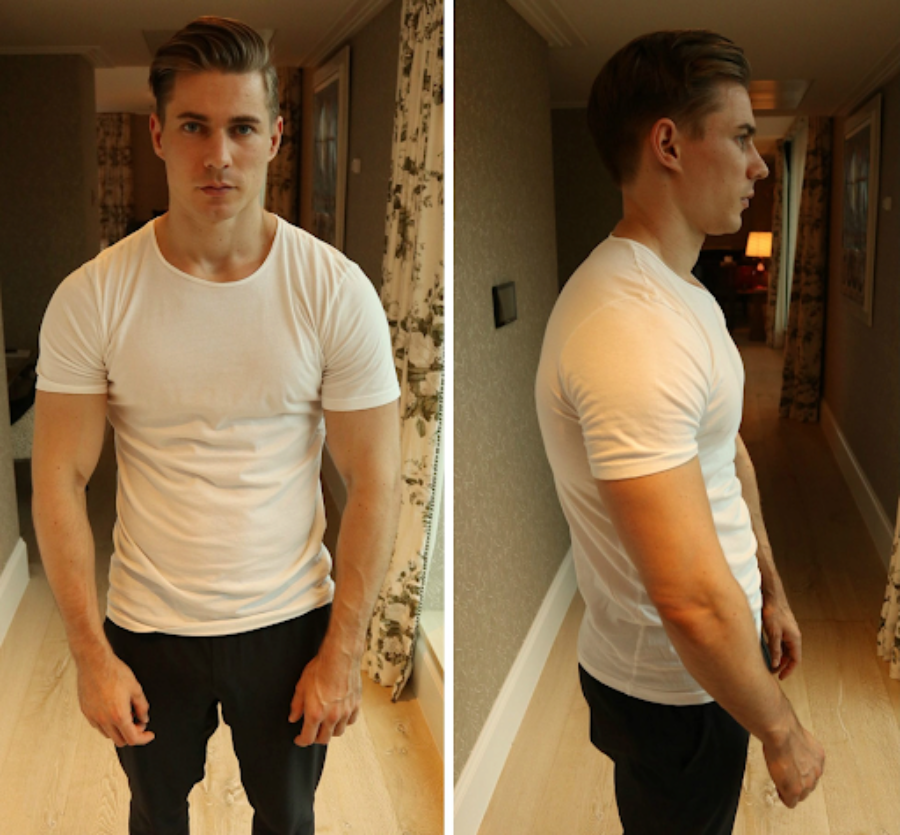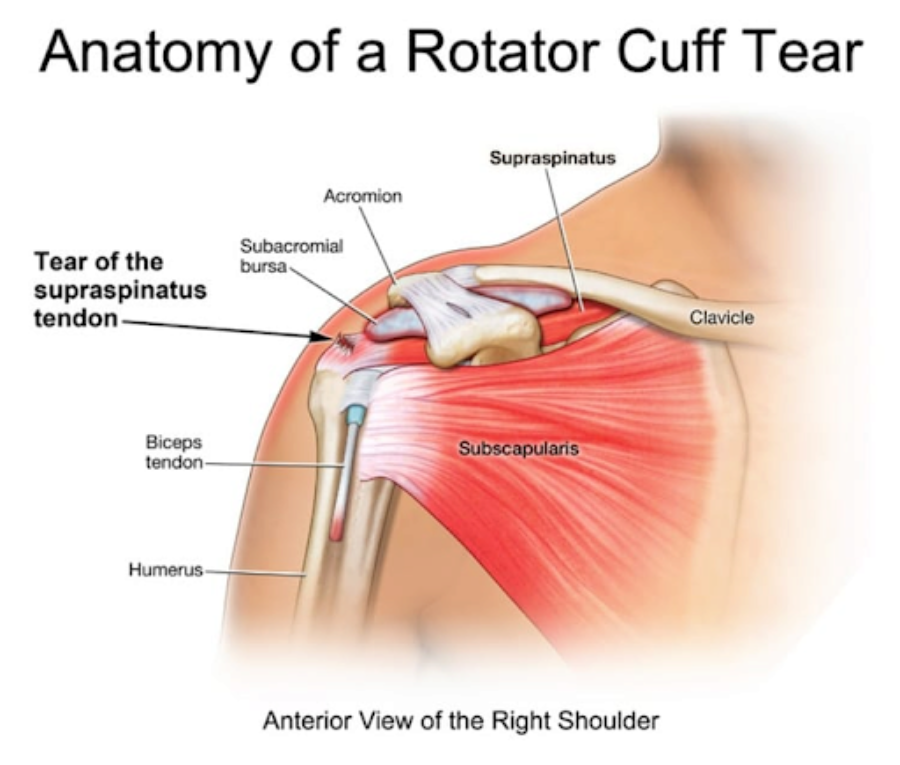7 Tips to Prevent Shoulder Injury in the Gym
If you’ve been weightlifting regularly, chances are you already experienced pain or injury on your shoulder following a bad workout. A study published by the International Journal of Sports and Exercise Medicine shows that the shoulder joint is the most injured body part among weightlifters.
This result is not surprising. The shoulder region takes a lot of stress and punishment in the gym. Every compound upper body exercise and several leg exercises involve the shoulder joint and surrounding tissues. It is prone to wear and tear over time because of the high impact of repetitive movements in this area.
This article will discuss ways to prevent shoulder injury in the gym. This will also include tips on improving your training performance to avoid pain and maximize your gains.
Your shoulder joint is the most mobile joint in the body. It has multiple degrees of freedom and allows complex movements you do every day. However, this mobility is gained in exchange for stability.
The shoulder is also the least stable joint in the human body. Hence, injuries such as dislocation and impingement syndromes are common among athletes and lifters.
One common issue in the gym is that it is too easy to focus on more appealing muscles that can be seen in front of the mirror. As a result, beginner lifters tend to have poor exercise choices that favor the frontal muscles more. This results in an imbalance between the front and back muscles' strength and pull.
Although studies are conflicting, significant muscle imbalance in the shoulder region is linked to the development of pain and injuries.
Here are some of the other causes of shoulder pain in the gym:
- Improper form
- Too frequent shoulder exercises
- Lack of proper conditioning
Having a proper balance of strength in your shoulder region can significantly decrease the risk of pain and injury.
Pull more than you push
The chest and front muscles of the shoulder almost always get more emphasis than the back muscles. This could mean many lifters are doing more push workouts (bench press/shoulder press) and might neglect pull exercises (rows/pull-ups).
This results in an imbalance in strength and pulls of the frontal muscles versus the upper back. This leads to increased internal rotation of the shoulders and rounding of the shoulders, which may contribute to the development of pain.
You may immediately notice this posturing in a person with a well-developed chest but lacking upper back strength or has a strength imbalance.
You can counter this effect by doing more pull exercises targeting the upper back, such as rowing, reverse fly, and T and Y pull.
Your rotator cuff is the primary source of dynamic stability of your shoulder. It holds the shoulder joint in place and allows smooth and pain-free movement of your arm and shoulder. Injury to these muscle groups results in pain, weakness, and decreased range of motion.
Strengthening your rotator cuff may have less contribution to your physique. However, they effectively prevent extraneous movements that could lead to wear and tear injuries and shoulder pain.
Include some shoulder stabilization exercises in your training to keep your shoulder healthy and pain-free.
You can minimize the stress on the shoulder joint and neck if you retract your shoulder blades and pull down your shoulders and back before performing an exercise.
This is somewhat similar to the concept of abdominal bracing when doing core exercises. By keeping your scapula retracted during an exercise, you are essentially allowing a healthy joint movement and maximum force generation.
This is why tucking your shoulders is encouraged in most lifting exercises such as bench press, pull-ups, and lateral raises.
Here’s a workout plan for women that will you build strong shoulders and overall strength:
Here’s a workout plan for men that will you build strong shoulders and overall strength:
Be sure to give your stretching routine some love when working out. Include dynamic stretches on the pectoral muscles and lats before the start of your training. These muscles are often tight and can affect the quality of your movements and range of motion.
Tightness in these muscles has been associated with the development of pain in the shoulder region and spine.
Chest muscle stretch:
Lats muscle stretch:
The mobility of your thoracic spine or upper back is essential for your shoulder health because it affects your posture. Without the proper thoracic spine posture, compensation and poor mechanics of the shoulder occur during overhead arm movements.
This is evident when performing a shoulder press exercise. You will often tend to overextend your shoulders to complete the movement if you can’t extend your thoracic spine correctly, which puts tremendous stress on the shoulder joints.
Do this to mobilize your thoracic spine:
- Place a foam roller horizontally on the floor.
- Lie down on the foam roller, so it is below your thoracic spine.
- Place your feet flat on the floor with your knees bent. Support your head using your hands.
- Lift your pelvis and roll up and down your thoracic spine until the base of your neck and down to the lower part of your rib cage.
- You can also extend your upper back and neck while keeping the foam roller in place. Do this for 3 to 5 repetitions.
You might think elite weightlifters and competitive bodybuilders are just about lifting tremendous heavy weights. But, in reality, these highly effective individuals are trained to schedule their workouts and optimize their training routine to be at their peak performance while minimizing damage to their bodies.
Microtraumas are a common occurrence in the gym as a result of exercise. Fortunately, our body has its natural way of repairing and healing itself.
The key to preventing injuries and accumulation of microtrauma is to provide enough time for your body to heal before you undergo another strenuous activity.
Avoid too frequent shoulder workouts. Usually, 2-3 times a week targeting the same region is enough to train your muscles and allow sufficient recovery.
If you are lifting with high intensity and weight, it is best to tone down the volume of your exercise by reducing your reps and sets.
Be mindful of your energy levels when training, especially on high-intensity shoulder exercises. Fatigue often leads to bad form and ineffective workouts that may lead to pain or injury.
Putting complex and injury-prone exercises at the beginning of your training session is advisable when you still have a lot of energy. This way, the potential risk of lacking concentration during a set may not be too costly.
Lack of sleep and having a bad day could also increase your risk of injury. Prepare for your workout sessions both physically and mentally.
Most shoulder injuries in the gym involve the space inside your shoulder joint called the sub-acromial space. Various tendons and ligaments run through this small space.
Excessive shoulder internal or external rotation further decreases the area's space and increases the risk of shoulder impingement.
Take extra caution when performing these exercises:
- Pull ups
- Behind the back exercises
- Dips
- Upright rows
Always ensure that you are doing them in proper form and retract your shoulders for stability. If possible, you can do alternative exercises instead that target the same muscle groups but are safer for your shoulders.
The shoulder joint is the most injured body part among lifters. It is best to take extra precautions in shoulder workouts by strengthening the surrounding muscles of the shoulder, especially the rotator cuff.
Having a proper push and full workout routine can prevent muscle imbalance that may lead to injury. In addition, take extra caution in exercises that put your shoulders in excessive rotations.



